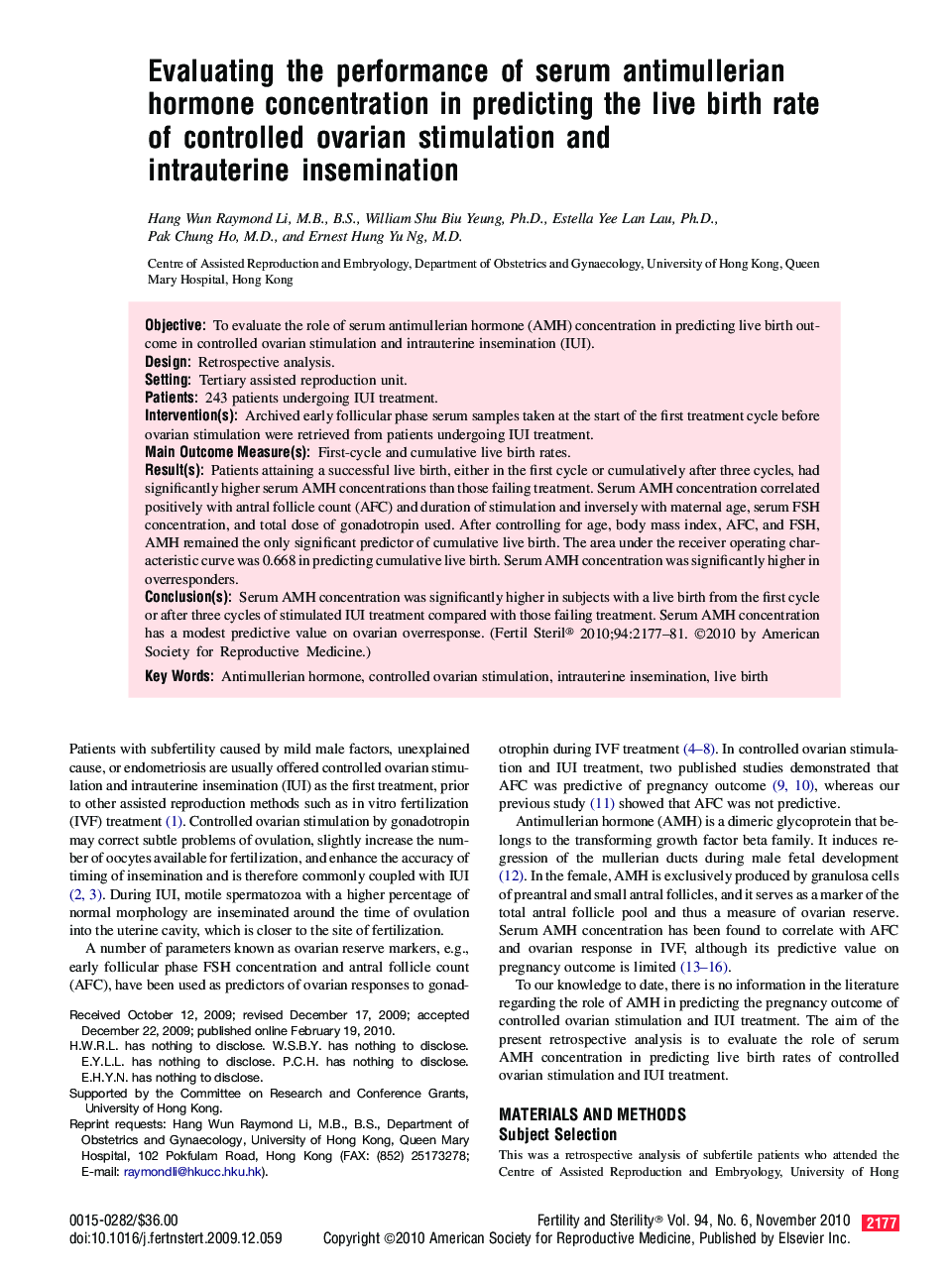| Article ID | Journal | Published Year | Pages | File Type |
|---|---|---|---|---|
| 3932843 | Fertility and Sterility | 2010 | 5 Pages |
ObjectiveTo evaluate the role of serum antimullerian hormone (AMH) concentration in predicting live birth outcome in controlled ovarian stimulation and intrauterine insemination (IUI).DesignRetrospective analysis.SettingTertiary assisted reproduction unit.Patients243 patients undergoing IUI treatment.Intervention(s)Archived early follicular phase serum samples taken at the start of the first treatment cycle before ovarian stimulation were retrieved from patients undergoing IUI treatment.Main Outcome Measure(s)First-cycle and cumulative live birth rates.Result(s)Patients attaining a successful live birth, either in the first cycle or cumulatively after three cycles, had significantly higher serum AMH concentrations than those failing treatment. Serum AMH concentration correlated positively with antral follicle count (AFC) and duration of stimulation and inversely with maternal age, serum FSH concentration, and total dose of gonadotropin used. After controlling for age, body mass index, AFC, and FSH, AMH remained the only significant predictor of cumulative live birth. The area under the receiver operating characteristic curve was 0.668 in predicting cumulative live birth. Serum AMH concentration was significantly higher in overresponders.Conclusion(s)Serum AMH concentration was significantly higher in subjects with a live birth from the first cycle or after three cycles of stimulated IUI treatment compared with those failing treatment. Serum AMH concentration has a modest predictive value on ovarian overresponse.
